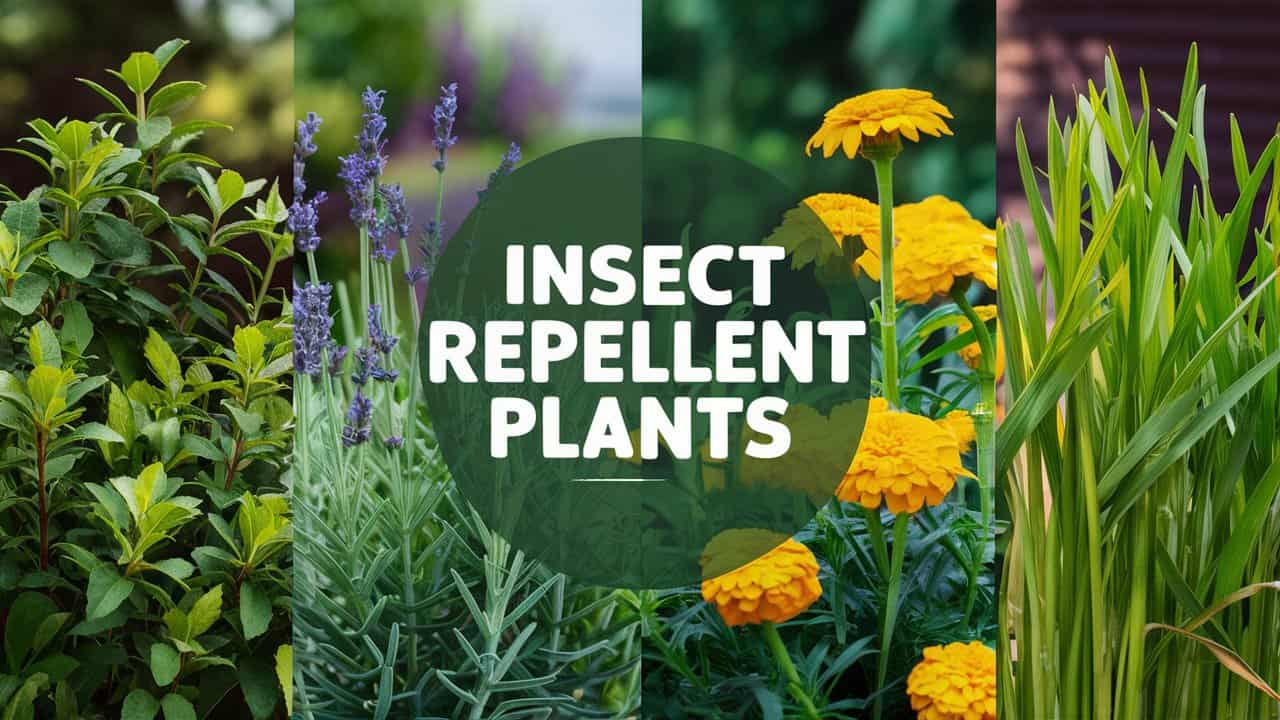While chemical-based insect repellents can be effective, they often come with undesirable side effects and environmental concerns. Fortunately, Mother Nature has provided us with a variety of plants that can act as natural insect repellents, allowing us to enjoy the great outdoors without the constant annoyance of buzzing, biting, and crawling critters.
Lavender
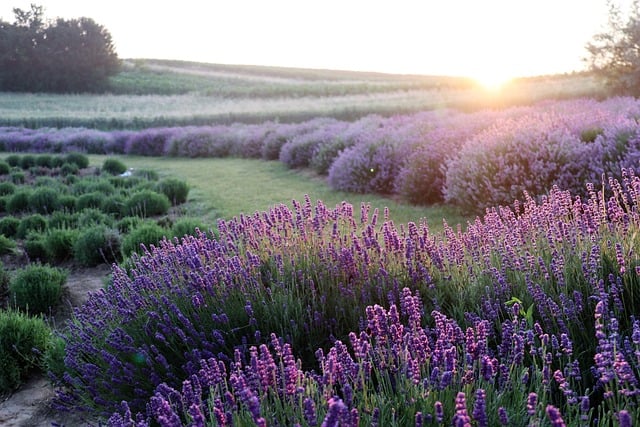
Lavender (Lavandula) is a fragrant, drought-tolerant herb that has long been revered for its ability to repel a wide range of insects, including mosquitoes, flies, fleas, and moths. The secret lies in the plant’s essential oils, which contain compounds like linalool and linalyl acetate that are known to be effective insect deterrents.
Rosemary
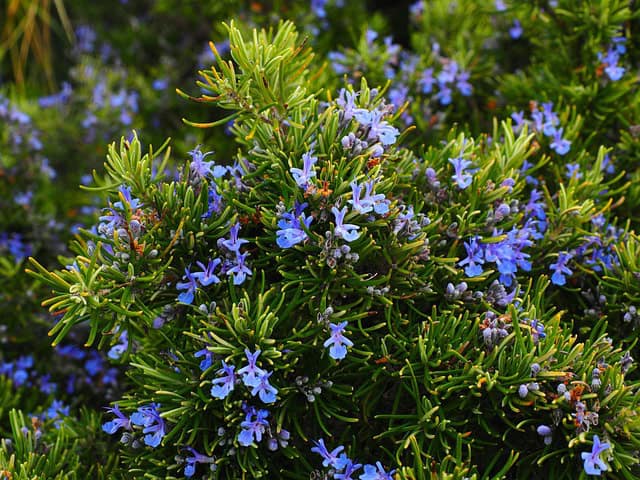
Rosemary (Rosmarinus officinalis) is another versatile herb that can serve as a natural insect repellent. Like lavender, rosemary contains essential oils that are known to be effective against a variety of pests, including mosquitoes, ants, and even ticks.
Planting rosemary around your patio, garden, or entryways can create a fragrant barrier that helps keep insects at bay. You can also use the leaves to create a natural insect-repellent spray by steeping them in water and then transferring the solution to a spray bottle. This DIY spray can be applied directly to your skin or clothing for added protection.
Rosemary’s hardy, evergreen nature makes it a low-maintenance addition to any outdoor space, and its distinctive, woody aroma can also enhance the ambiance of your alfresco gatherings.
Chrysanthemum

The chrysanthemum (Chrysanthemum spp.) is a flowering plant that has long been recognized for its insect-repelling properties, particularly against mosquitoes, ants, and roaches. The active ingredient responsible for this pest-deterring power is a compound called pyrethrin, which is derived from the plant’s flowers and leaves.
Chrysanthemums can be grown as annuals or perennials, depending on your climate, and their vibrant blooms come in a wide range of colors, from classic white and yellow to bold pinks and purples. When planted around your outdoor living spaces, these cheerful flowers can create a natural barrier that helps keep insects at bay.
You can also harvest the flowers and leaves of chrysanthemums to create your own natural insect repellent sprays. The dried flowers can even be used in sachets or potpourri to deter pests in your home.
Mint
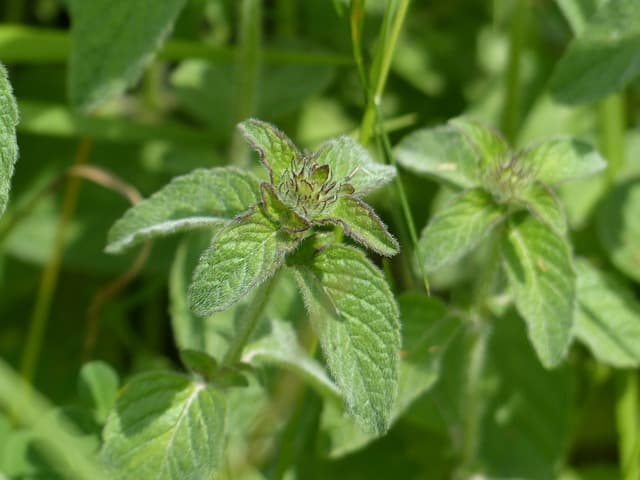
Mint (Mentha) is a fragrant, fast-growing herb that is well-known for its ability to deter a variety of insects, including mosquitoes, ants, and aphids. The secret to mint’s insect-repelling prowess lies in its essential oils, which contain compounds like menthol and pulegone that are highly effective at keeping bugs at bay.
Mint is a hardy, resilient plant that can thrive in a variety of soil conditions, making it an easy and low-maintenance addition to your outdoor spaces. Just be mindful that mint can be an aggressive grower, so it’s best to contain it in pots or garden beds with defined borders.
Garlic
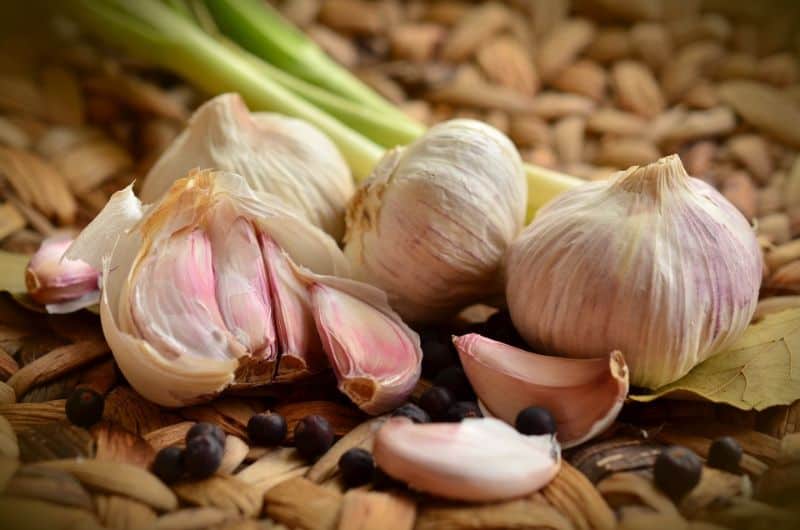
Garlic (Allium sativum) is not only a flavorful culinary staple, but it also boasts impressive insect-repelling properties. The sulfur compounds found in garlic, such as allicin, are known to be effective at deterring a wide range of pests, including mosquitoes, aphids, and even some types of moths.
In addition to its pest-deterring abilities, garlic is also a valuable companion plant for many vegetables and herbs, as it can help protect them from various insect infestations. By incorporating garlic into your outdoor landscape, you’ll not only enjoy a bug-free environment but also potentially boost the health and productivity of your other plants.
Catnip
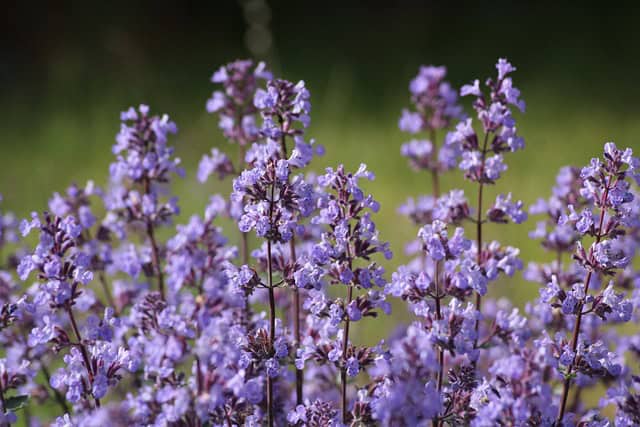
Catnip (Nepeta cataria) is a member of the mint family that is well-known for its ability to attract and entertain felines. However, this versatile plant also has a secret superpower: it can act as a natural insect repellent.
The active compound in catnip that drives cats wild, nepetalactone, is also effective at deterring a variety of insects, including mosquitoes, ants, and even aphids. When planted around your outdoor spaces, catnip can create a natural barrier that helps keep these unwanted pests at bay.
In addition to its insect-repelling properties, catnip also has a pleasant, minty aroma that can enhance the ambiance of your outdoor living areas. And, of course, if you have feline companions, they’re sure to appreciate the presence of this captivating plant.
Lemongrass
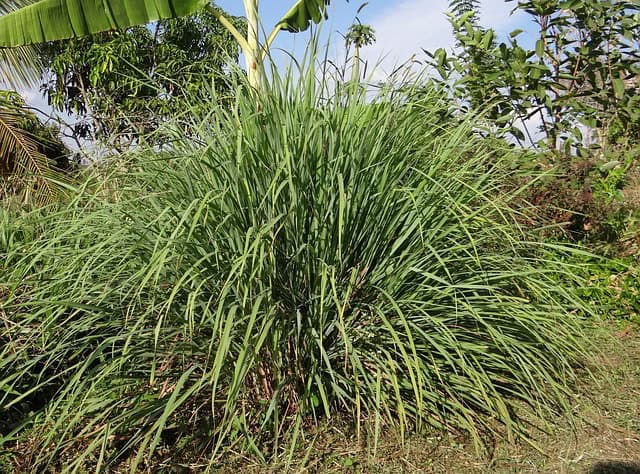
Lemongrass (Cymbopogon) is a tall, aromatic grass that is widely recognized for its ability to repel a range of insects, including mosquitoes, flies, and ants. The secret to lemongrass’s insect-repelling prowess lies in its essential oils, which contain compounds like citronella that are highly effective at keeping bugs at bay.
When planted around your patio, garden, or outdoor living areas, lemongrass can create a natural barrier that helps prevent insects from invading your space. You can also crush the leaves and rub them directly on your skin or clothing for a personal insect-repellent boost. The refreshing, lemony aroma of this versatile plant can also help mask human scents that may attract unwanted insects.
Lemongrass is a hardy, low-maintenance plant that thrives in full sun and well-drained soil. It can grow quite tall, reaching up to 6 feet in height, making it an excellent choice for creating a natural screen or privacy barrier in your outdoor spaces.
Marigold

Marigolds (Tagetes) are vibrant, cheerful flowers that not only add a pop of color to your garden but also possess impressive insect-repelling properties. These plants contain natural compounds called pyrethrins, which are effective at deterring a wide range of pests, including aphids, whiteflies, and even some types of nematodes.
Nasturtium
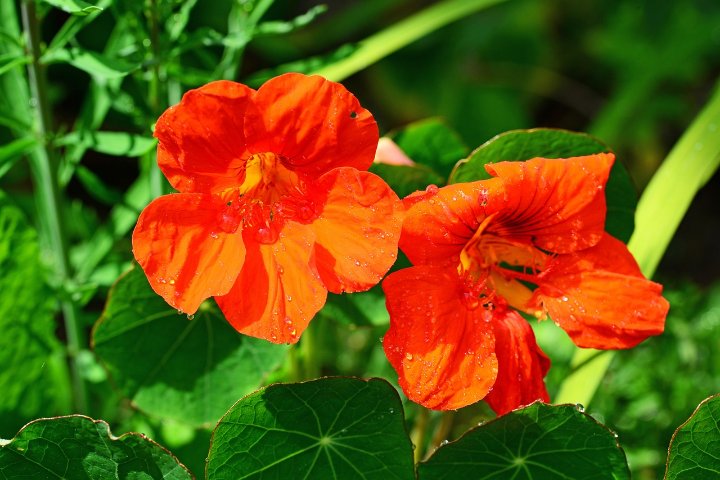
Nasturtiums (Tropaeolum) are vibrant, trailing plants that not only add a touch of whimsy to your garden but also possess impressive insect-repelling properties. These plants contain natural compounds called glucosinolates, which are effective at deterring a wide range of pests, including aphids, whiteflies, and even some types of caterpillars.
Eucalyptus
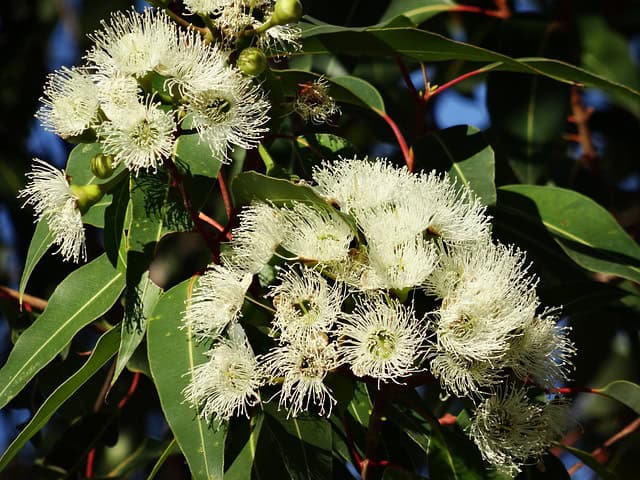
Eucalyptus (Eucalyptus spp.) is a versatile, aromatic tree that is well-known for its ability to repel a wide range of insects, including mosquitoes, flies, and even some types of ticks. The secret to eucalyptus’s insect-repelling prowess lies in its essential oils, which contain compounds like citronellal and eucalyptol that are highly effective at keeping bugs at bay.
Eucalyptus is a hardy, fast-growing tree that thrives in full sun and well-drained soil. While it may not be suitable for all climates, it can make an excellent addition to outdoor spaces in warmer regions, where its insect-repelling properties and lush, evergreen foliage can truly shine.
Scented Geranium
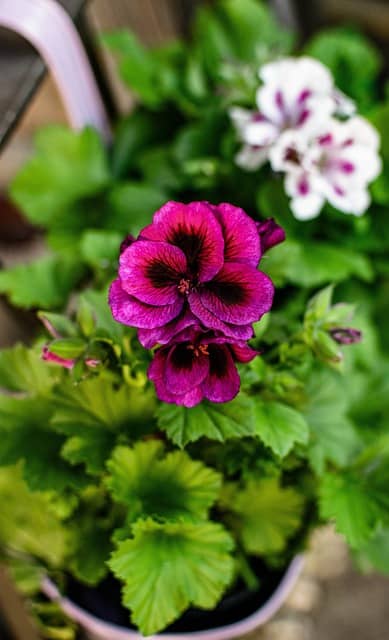
Scented geraniums (Pelargonium) are a diverse group of plants that not only boast a wide range of aromatic fragrances but also possess impressive insect-repelling properties. These plants contain natural compounds like citronellol and geraniol, which are effective at deterring a variety of pests, including mosquitoes, ants, and even some types of aphids.
Scented geraniums come in a wide range of cultivars, each with its own unique scent, from lemon and rose to peppermint and nutmeg. This diversity allows you to choose varieties that not only serve as effective insect repellents but also complement the aesthetic of your outdoor spaces.
Pyrethrum
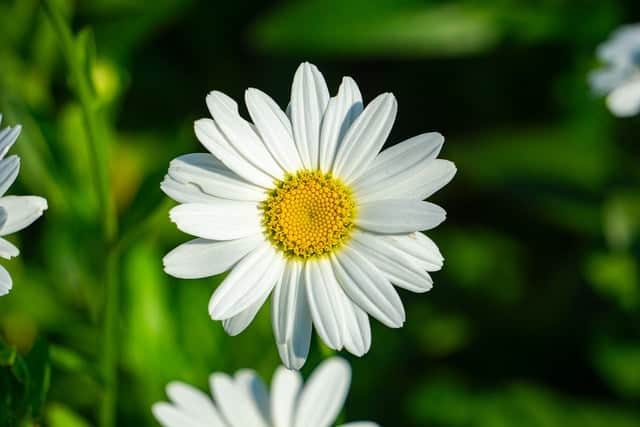
Pyrethrum (Chrysanthemum cinerariifolium) is a flowering plant that is renowned for its insect-repelling properties. The active compounds in pyrethrum, known as pyrethrins, are highly effective at deterring a wide range of pests, including mosquitoes, ants, and even some types of ticks.
Basil (Ocimum basilicum)

Basil is a fragrant, versatile herb that is not only a culinary staple but also a powerful natural insect repellent. The essential oils in basil, particularly the compound eugenol, are highly effective at deterring a wide range of pests, including mosquitoes, flies, and even some types of aphids.
Basil is a relatively easy-to-grow plant that thrives in full sun and well-drained soil. It’s an excellent choice for container gardens or as a companion plant in your vegetable or herb beds, as it can help protect your other plants from various insect infestations.
Borage (Borago officinalis)
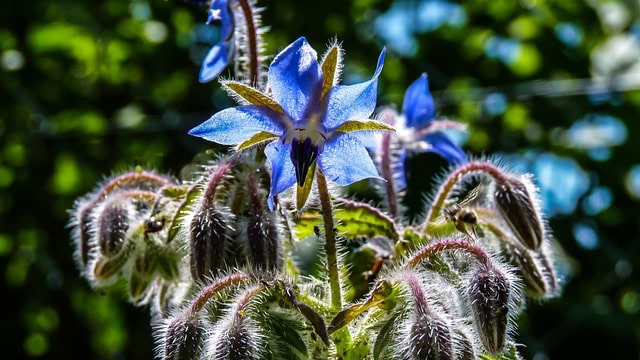
Borage is a cheerful, star-shaped flower that not only adds a touch of whimsy to your garden but also possesses impressive insect-repelling properties. The leaves and flowers of the borage plant contain natural compounds called pyrrolizidine alkaloids, which are effective at deterring a variety of pests, including aphids, caterpillars, and even some types of beetles.
Calendula (Calendula officinalis)
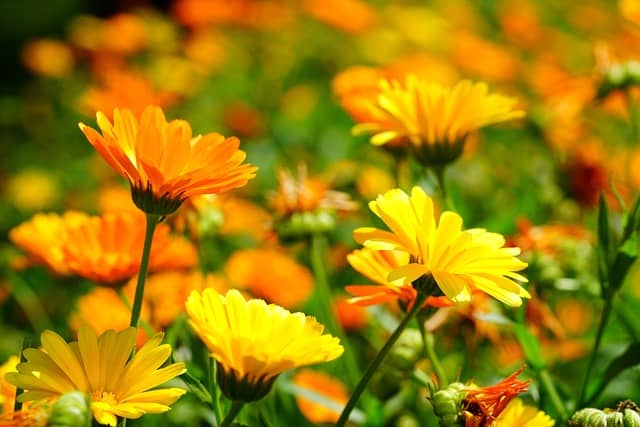
Calendula, also known as pot marigold, is a vibrant, daisy-like flower that not only adds a cheerful pop of color to your garden but also possesses impressive insect-repelling properties. The essential oils in calendula, particularly the compound calendulin, are effective at deterring a wide range of pests, including aphids, whiteflies, and even some types of caterpillars.
Catmint (Nepeta)
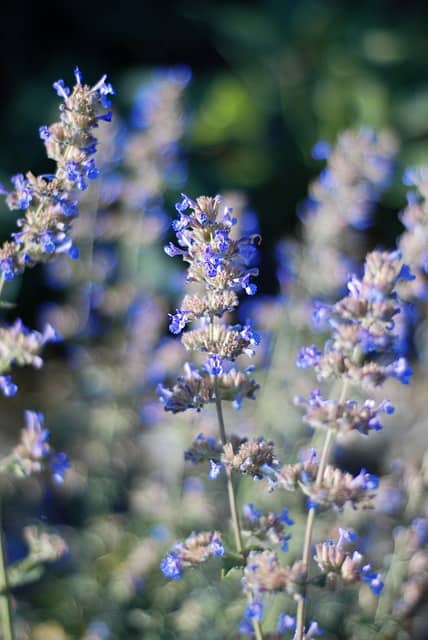
Catmint, also known as catnip, is a member of the mint family that is not only beloved by felines but also possesses impressive insect-repelling properties. The essential oils in catmint, particularly the compound nepetalactone, are highly effective at deterring a wide range of pests, including mosquitoes, aphids, and even some types of ants.
Catmint is a hardy, drought-tolerant plant that thrives in full sun and well-drained soil. It’s an excellent choice for border plantings, rock gardens, or as a groundcover, as it can spread and form a dense, fragrant mat that helps keep insects at bay.
Chives (Allium schoenoprasum)
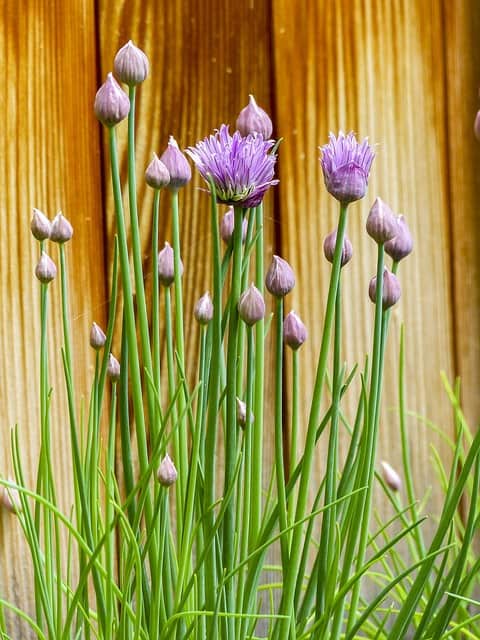
Chives are a versatile, onion-flavored herb that not only add a delicious punch to your culinary creations but also possess insect-repelling properties. The sulfur-containing compounds in chives, such as allicin, are effective at deterring a variety of pests, including aphids, spider mites, and even some types of beetles.
Dill (Anethum graveolens)
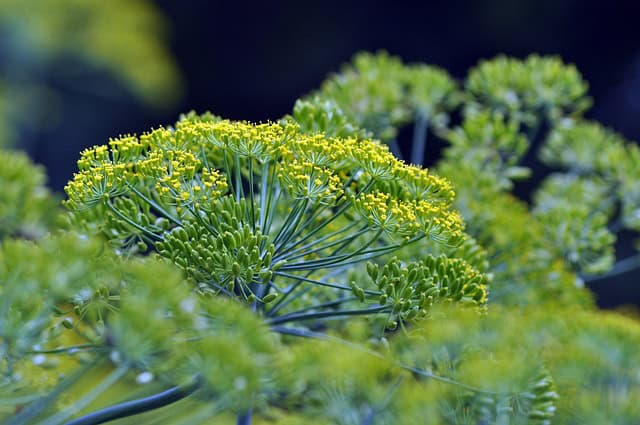
Dill is a fragrant, feathery herb that not only adds a unique flavor to your culinary creations but also possesses impressive insect-repelling properties. The essential oils in dill, particularly the compound carvone, are effective at deterring a wide range of pests, including aphids, spider mites, and even some types of caterpillars.
Hyssop (Agastache rupestris)
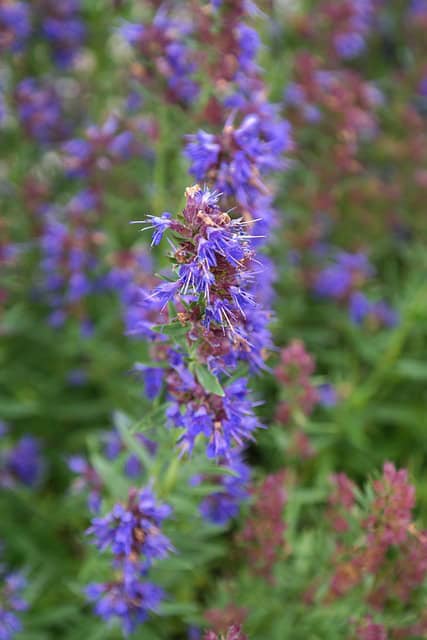
Hyssop is a fragrant, aromatic herb that not only adds a unique flavor to your culinary creations but also possesses impressive insect-repelling properties. The essential oils in hyssop, particularly the compound pinocamphone, are effective at deterring a variety of pests, including aphids, whiteflies, and even some types of moths.
Onions (Allium cepa)
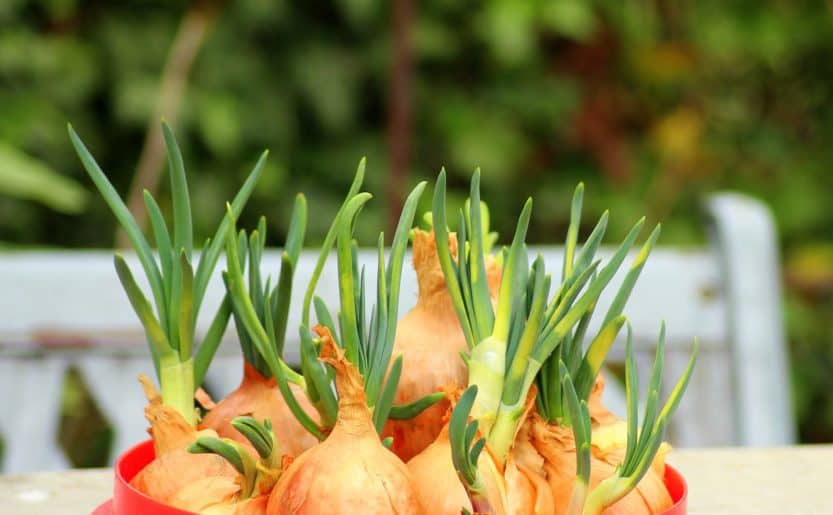
Onions are a staple in many kitchens, but they also possess impressive insect-repelling properties. The sulfur-containing compounds in onions, such as allicin, are effective at deterring a variety of pests, including aphids, spider mites, and even some types of beetles.
Oregano (Origanum)
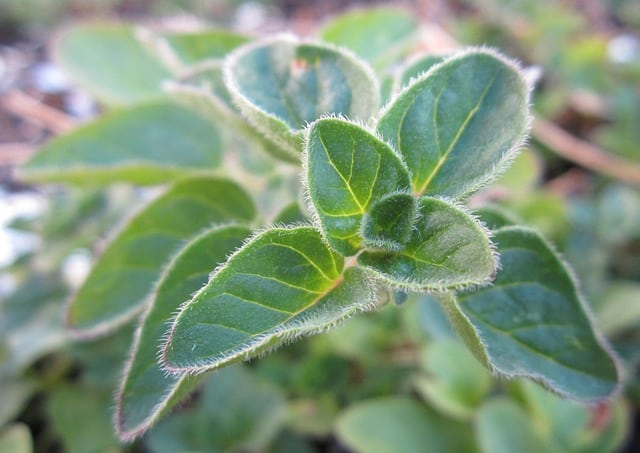
Oregano is a fragrant, flavorful herb that not only adds a delicious punch to your culinary creations but also possesses impressive insect-repelling properties. The essential oils in oregano, particularly the compound carvacrol, are effective at deterring a wide range of pests, including mosquitoes, ants, and even some types of aphids.
Parsley (Petroselinum)

Parsley is a fragrant, leafy herb that not only adds a fresh, vibrant flavor to your culinary creations but also possesses impressive insect-repelling properties. The essential oils in parsley, particularly the compound myristicin, are effective at deterring a variety of pests, including aphids, spider mites, and even some types of caterpillars.
Radish (Raphanus sativus)

Radishes are a crunchy, peppery root vegetable that not only add a delightful crunch to your salads and dishes but also possess impressive insect-repelling properties. The compounds in radishes, particularly the isothiocyanates, are effective at deterring a variety of pests, including aphids, cabbage worms, and even some types of beetles.
Sage (Salvia officinalis)
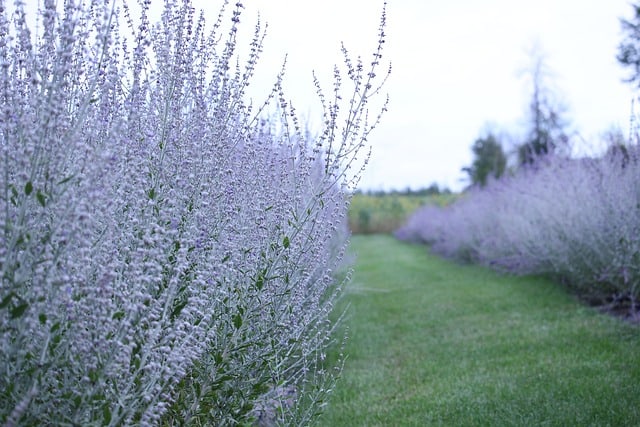
Sage is a fragrant, aromatic herb that not only adds a savory depth to your culinary creations but also possesses impressive insect-repelling properties. The essential oils in sage, particularly the compound thujone, are effective at deterring a variety of pests, including aphids, moths, and even some types of flies.
Savory (Satureja hortensis)
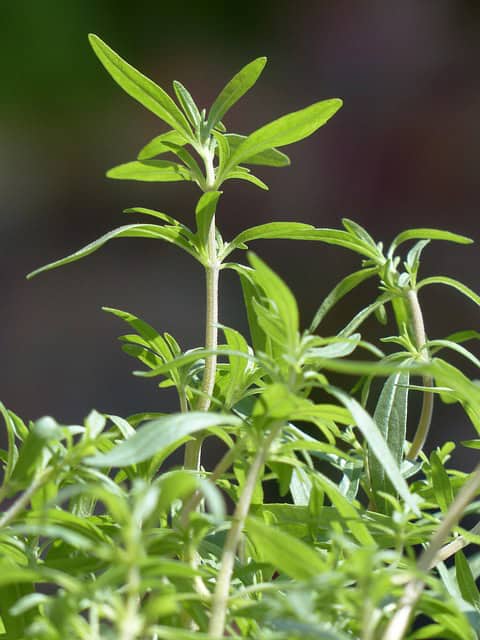
Savory is a fragrant, peppery herb that not only adds a unique flavor to your culinary creations but also possesses impressive insect-repelling properties. The essential oils in savory, particularly the compound carvacrol, are effective at deterring a variety of pests, including aphids, spider mites, and even some types of fleas.
Thyme (Thymus vulgaris)
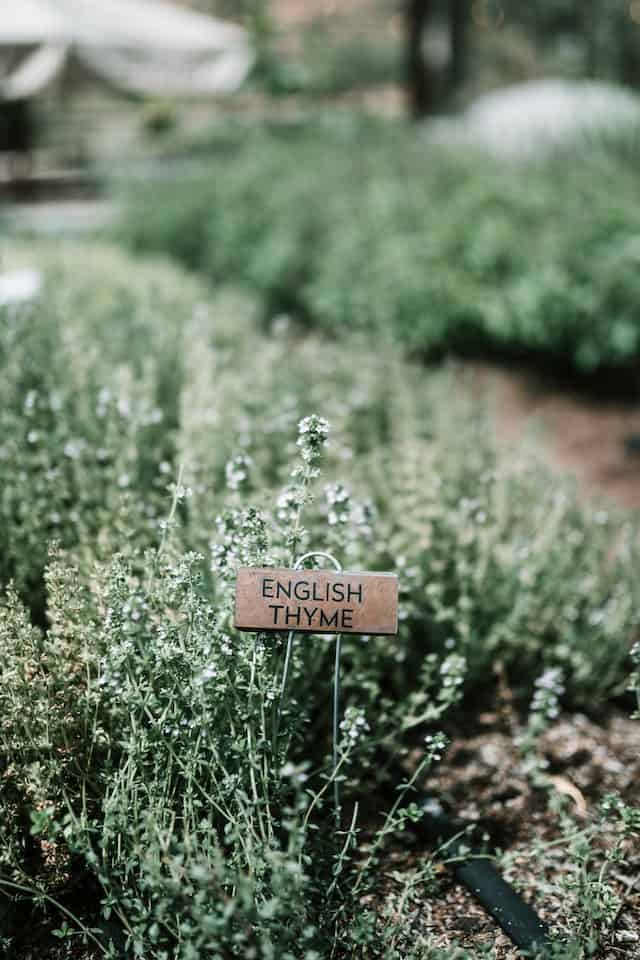
Thyme is a fragrant, low-growing herb that not only adds a warm, earthy flavor to your culinary creations but also possesses impressive insect-repelling properties. The essential oils in thyme, particularly the compound thymol, are effective at deterring a wide range of pests, including mosquitoes, ants, and even some types of moths.
Wormwood (Artemisia ludoviciana)

Wormwood is a fragrant, silvery-gray plant that not only possesses a unique, slightly bitter flavor but also has impressive insect-repelling properties. The essential oils in wormwood, particularly the compound artemisinin, are effective at deterring a variety of pests, including mosquitoes, ticks, and even some types of moths.


